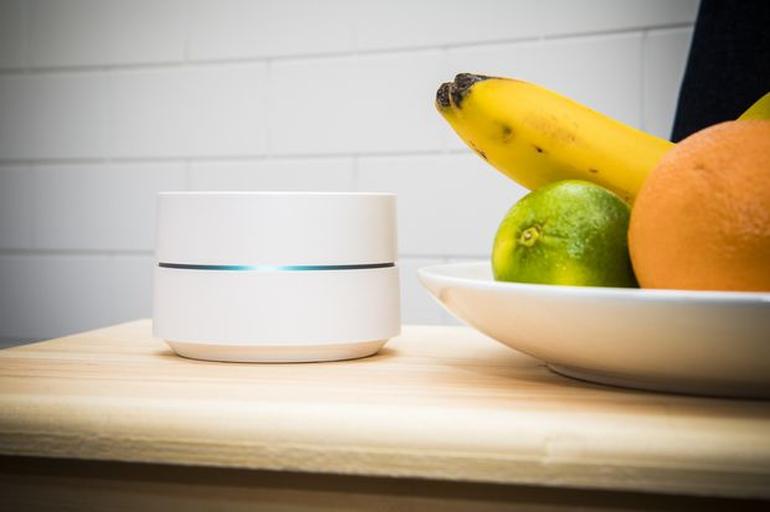Use Google Wifi to upgrade the Wi-Fi on older PCs and Macs


James Martin/CNET
Living in a wireless-only world has been quite the adjustment for a couple of folks who had gigabit Ethernet jacks in every wall of our previous home. In our new house, we haven't run Ethernet, so we're stuck with whatever connectivity we can get from our Wi-Fi signals.
More great project ideas
In previous homes, before I wired GigE into all the walls, I used to run wires along all the baseboards to distribute connectivity. But Wi-Fi has gotten a lot better over the years. Now, if you can get a good signal, 802.11ac is almost as good as a wired connection. So moving to Wi-Fi from wired isn't as much of a performance sacrifice as it might have been even five years ago.
That said, not all of our computers support 802.11ac. We're rocking four 2011 and 2012-vintage Mac minis, and those beasts max out at the 802.11n of yesteryear.
Today's 802.11ac is not only about three times faster than 802.11n, it supports "wider channels (80 or 160 MHz versus 40 MHz) in the 5 GHz band, more spatial streams (up to eight versus four), higher-order modulation (up to 256-QAM vs. 64-QAM), and the addition of Multi-user MIMO (MU-MIMO)," according to the helpful Wikipedia article on the 802.11 standard.
We've been feeling the performance drop in our Mac minis. A few of them aren't mission critical, but my wife's main desktop computer is a Mac mini. She moves a lot of big files. She's definitely been feeling the performance drop of going from hard-wired GigE down to wireless 802.11n.
Unfortunately, you can't just swap out the Wi-Fi module in the Mac mini for a more modern unit. Like almost everything Apple builds, you're pretty much stuck with what originally came in the machine. You could try adding a random USB 3 Wi-Fi dongle, but there are compatibility and driver challenges in doing so. Plus, you use up a precious USB slot.
Just about a year ago, I ditched my trusty Netgear router for an Asus OnHub device. By the time I bought my OnHub, its firmware had been updated to make it into a Google Wifi device, just in a taller package that looks a lot like a tiny nuclear plant cooling tower. Google Wifi devices are little white disks about the size of two hockey pucks glued on top of each other. I started sprinkling these around the house to boost my signal in Wi-Fi dead zones.
One of the neat features of the Google Wifi puck is that each unit can function as a mesh repeater or a router. That means each comes with a WAN port and a LAN Ethernet port. What's particularly cool is that you can extend a wired network from any puck, anywhere in your home or office.
You can attach switches and Ethernet devices to any repeater station, just as you would to your main router. Google Wifi automagically makes it all into one networked subnet. That means you can have multiple wired clusters, and each can share one set of IP addresses. No muss. No fuss.
This presented an ideal solution for my wife's Mac mini, which happens to be as far from our incoming cable connection as it's possible to be, and still be inside the house. I'd already placed a few pucks throughout the house to extend the network, so I thought that a logical extension of that idea would be to link her Mac mini to one of the pucks.
I grabbed a spare Ethernet cable and plugged one end into her Mac mini and the other end into the Google Wifi's LAN port. The Mac automatically switched to wired networking mode, and suddenly her network connectivity numbers went through the roof.
I ran a fast.com test, and her machine now reported 230Mbps compared to the 40Mbps she had been getting. What made this so cool was that I didn't have to make any network changes, and I didn't have to futz with drivers.
TechRepublic: Google Wifi wireless router: The smart person's guide
So there you go. This fix will help many older machines, regardless of OS. Rather than trying to find an add-on dongle, use Google Wifi. This has particular benefits in that you may be able to upgrade wireless performance on older machines that can't run newer drivers, or don't have USB 3 support.
If you use this method to upgrade any of your older machines, or you're using Google Wifi now, please let us know how it's working out in the TalkBacks below.